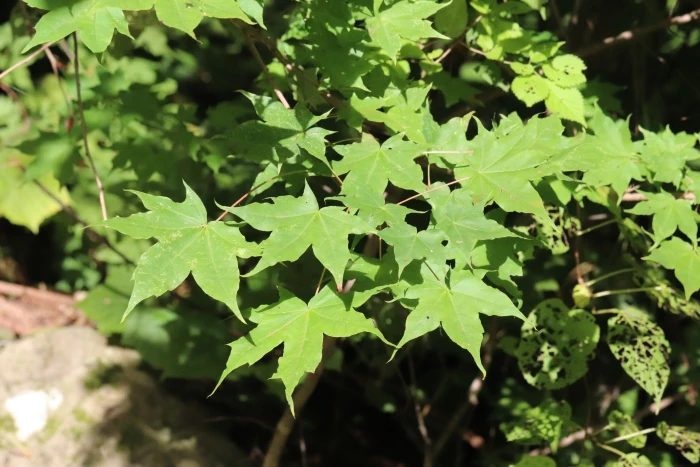Painted Maple
(Acer pictum)
Painted Maple (Acer pictum)
/
/

Nina Filippova
CC BY 4.0
Image By:
Nina Filippova
Recorded By:
Copyright:
CC BY 4.0
Copyright Notice:
Photo by: Nina Filippova | License Type: CC BY 4.0 | License URL: http://creativecommons.org/licenses/by/4.0/ | Rights Holder: Nina Filippova | Publisher: iNaturalist | Date Created: 2021-08-31T09:56:52-07:00 |





























Estimated Native Range
Climate Requirements
| • Precipitation | 57" - 69" |
| • High Temp. | 72°F - 85°F |
| • Low Temp. | 10°F - 29°F |
Summary
Acer pictum, commonly known as Painted Maple or sometimes Yellow-Paint Maple, is a deciduous tree native to a variety of habitats including mixed forests, forest margins, and along streams in Japan, Korea, and parts of eastern China and Russia. It typically grows to a height and width of 30-40 feet (9-12 meters), forming a rounded canopy with a moderate growth rate. The leaves of Painted Maple are notable for their variable coloration, often with distinctive splashes of yellow, which is the origin of the common name "Yellow-Paint Maple". The tree produces inconspicuous yellowish-green flowers in spring, followed by winged samaras that mature in late summer or autumn.
Painted Maple is valued for its attractive foliage, particularly in autumn when the leaves turn vibrant shades of yellow, orange, and red. It is used in garden and landscape settings for its ornamental qualities and is suitable for urban environments due to its tolerance of pollution. It can be planted as a specimen tree, in woodland gardens, or as part of a mixed border. This species prefers well-drained soils and can adapt to a range of soil types, from clay to loam. While it is adaptable to light conditions, it thrives in full sun to part shade. There are no major disease or pest issues, but it can be susceptible to leaf scorch in excessively dry conditions.CC BY-SA 4.0
Painted Maple is valued for its attractive foliage, particularly in autumn when the leaves turn vibrant shades of yellow, orange, and red. It is used in garden and landscape settings for its ornamental qualities and is suitable for urban environments due to its tolerance of pollution. It can be planted as a specimen tree, in woodland gardens, or as part of a mixed border. This species prefers well-drained soils and can adapt to a range of soil types, from clay to loam. While it is adaptable to light conditions, it thrives in full sun to part shade. There are no major disease or pest issues, but it can be susceptible to leaf scorch in excessively dry conditions.CC BY-SA 4.0
Plant Description
- Plant Type: Tree
- Height: 30-40 feet
- Width: 30-40 feet
- Growth Rate: Slow
- Flower Color: N/A
- Flowering Season: Spring
- Leaf Retention: Deciduous
Growth Requirements
- Sun: Full Sun, Part Shade
- Water: Medium
- Drainage: Slow, Medium, Fast
Common Uses
Bee Garden, Bird Garden, Butterfly Garden, Drought Tolerant, Low Maintenance
Natural Habitat
Mixed forests, forest margins, and along streams in Japan, Korea, eastern China, and Russia
Other Names
Common Names: Painted Maple , 털고로쇠나무
Scientific Names: Kalopanax pictus, Acer pictum, Acer pictum f. dissectum, Acer pictum var. dissectum, Acer mono f. pulvigerum, Acer mono f. puberulum, Acer mono var. nikkoense, Acer mono var. taishakuense, Acer pictum var. angustilobum
GBIF Accepted Name: Acer pictum Thunb.